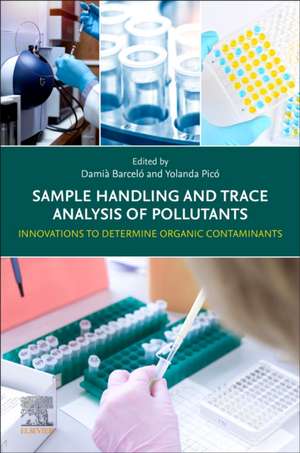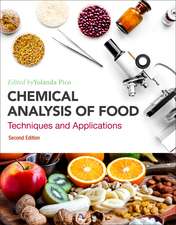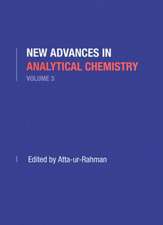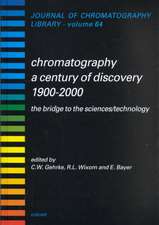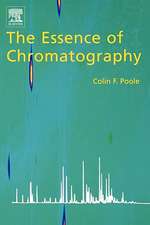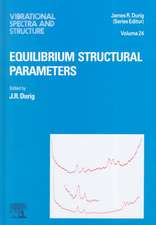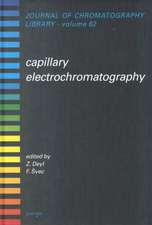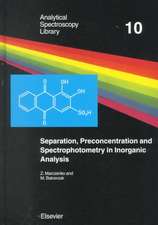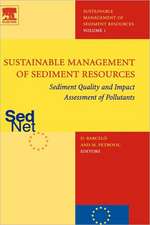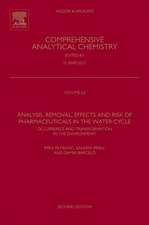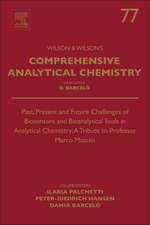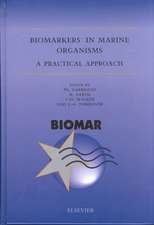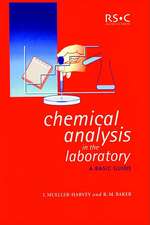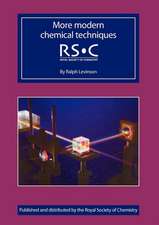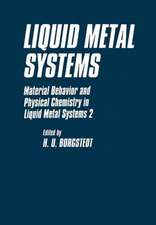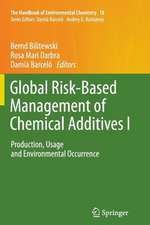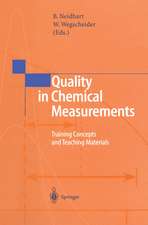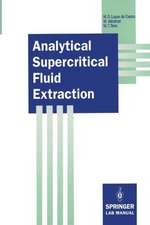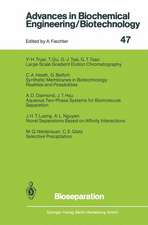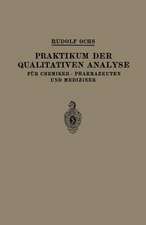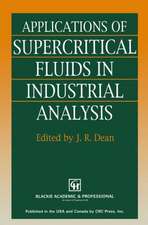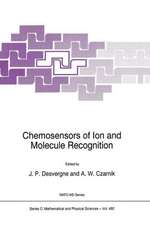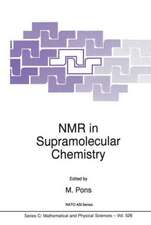Sample Handling and Trace Analysis of Pollutants: Innovations to Determine Organic Contaminants
Editat de Damia Barcelo, Yolanda Picoen Limba Engleză Paperback – 24 oct 2024
This book is an excellent resource for postgraduate students, environmental chemists and analytical chemists, as well as those working in environmental laboratories, laboratories of official environmental controls, universities and the private sector.
- Discusses techniques ranging from chromatography coupled to mass spectrometry, to emerging areas such as nanotechnology, immunoassays and biosensors
- Covers the characteristics, advantages, limitations and potential of each technique and the current strategies in each method's development and validation
- Outlines practical solutions to challenging problems in the analysis of pollutants in environmental matrices, including how to combine techniques for improved efficacy
Preț: 1142.02 lei
Preț vechi: 1489.93 lei
-23% Nou
Puncte Express: 1713
Preț estimativ în valută:
218.53€ • 228.74$ • 181.88£
218.53€ • 228.74$ • 181.88£
Carte tipărită la comandă
Livrare economică 24 martie-07 aprilie
Preluare comenzi: 021 569.72.76
Specificații
ISBN-13: 9780323856010
ISBN-10: 0323856012
Pagini: 820
Dimensiuni: 152 x 229 mm
Greutate: 1.26 kg
Ediția:2
Editura: ELSEVIER SCIENCE
ISBN-10: 0323856012
Pagini: 820
Dimensiuni: 152 x 229 mm
Greutate: 1.26 kg
Ediția:2
Editura: ELSEVIER SCIENCE
Public țintă
Postgraduate students, environmental chemists and analytical chemists;environmental laboratories, laboratories of official environmental controls; universities
A variety of researchers of other disciplines from government, academia, and private industry
Cuprins
Section 1. Field Sampling Techniques, Sample Preparation and Extraction
1. Analytical methods for determining organic compounds in air
2. Passive samplers for the analysis of organic compounds in water samples
3. Extraction of organic contaminants from grab and composite water samples
4. Separation, clean-up and recoveries of trace organic contaminants from soils and sediment
5. Separation, clean-up and recoveries of trace organic pollutants from biota
6. Handling of food samples
Section 2. Trace analysis of organic pollutants
7. Gas chromatography-mass spectrometry
8. Liquid chromatography-mass spectrometry
9. Suspected and non-target high resolution mass spectrometry
10. Imaging techniques. The increasing role of imaging mass spectrometry
11. Immunoassays of organic contaminants
12. Fundamentals and applications of biosensors for environmental analysis
13. The role of nanomaterials and nanoparticles as analytical tools
14. Smartphone as a Portable Detector, Analytical Device, or Instrument Interface
Section 3. Quality Assurance, Reference Materials, Chemometrics and Data Dissemination
15. Certified reference materials for the quality control of measurements in environmental monitoring
16. Standard reference materials for the determination of trace organic constituents in environmental samples
17. Guidelines to establish the quality assurance. Analytical parameters, Inter-laboratory studies
18. Data dissemination and repositories
19. Interpretation of environmental data using chemometrics
20. Determination of the uptake and accumulation of emerging contaminants in soil and plant treated with wastewater
21. Endocrine disrupting compounds
22. Current issues on micro- and nanoplastics
23. Determination of nanomaterials in the environment
24. Detection of antibiotic resistance genes (ARG) in water and sludges
25. Identification of metabolites and/or degradation products of environmental contaminants
26. The anthropic fingerprinting in wastewater: Wastewater based-epidemiology
1. Analytical methods for determining organic compounds in air
2. Passive samplers for the analysis of organic compounds in water samples
3. Extraction of organic contaminants from grab and composite water samples
4. Separation, clean-up and recoveries of trace organic contaminants from soils and sediment
5. Separation, clean-up and recoveries of trace organic pollutants from biota
6. Handling of food samples
Section 2. Trace analysis of organic pollutants
7. Gas chromatography-mass spectrometry
8. Liquid chromatography-mass spectrometry
9. Suspected and non-target high resolution mass spectrometry
10. Imaging techniques. The increasing role of imaging mass spectrometry
11. Immunoassays of organic contaminants
12. Fundamentals and applications of biosensors for environmental analysis
13. The role of nanomaterials and nanoparticles as analytical tools
14. Smartphone as a Portable Detector, Analytical Device, or Instrument Interface
Section 3. Quality Assurance, Reference Materials, Chemometrics and Data Dissemination
15. Certified reference materials for the quality control of measurements in environmental monitoring
16. Standard reference materials for the determination of trace organic constituents in environmental samples
17. Guidelines to establish the quality assurance. Analytical parameters, Inter-laboratory studies
18. Data dissemination and repositories
19. Interpretation of environmental data using chemometrics
20. Determination of the uptake and accumulation of emerging contaminants in soil and plant treated with wastewater
21. Endocrine disrupting compounds
22. Current issues on micro- and nanoplastics
23. Determination of nanomaterials in the environment
24. Detection of antibiotic resistance genes (ARG) in water and sludges
25. Identification of metabolites and/or degradation products of environmental contaminants
26. The anthropic fingerprinting in wastewater: Wastewater based-epidemiology
